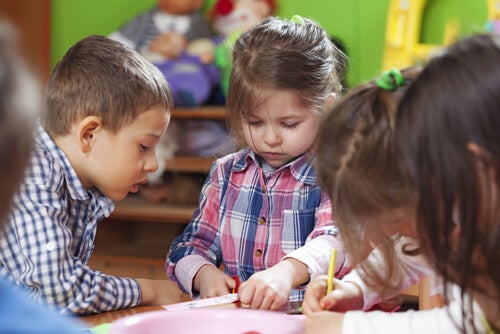
The Montessori philosophy recognizes that a child learns through experience, so the environment must be a positive one. A prepared environment is essential for the development of the child, as it is the link between the child and the adults. The children in a Montessori classroom are free to explore their interests and pursue activities that they find most interesting. The child’s environment is designed to promote learning and create a joyful environment.
The classroom environment must be carefully prepared and the materials must be arranged so that kids can learn through direct experience. There should be no distractions or clutter in the classroom. The teacher is there to guide the learning process and ensure the safety of the children. The environment should be clean and well-prepared. The teachers should always show respect and kindness to their students. This is one of the fundamentals of the Montessori Method.
Observation and child-directed learning are key principles of the Montessori method. Children are encouraged to learn independently. Often, traditional education involves lecturing and humiliating children. The Montessori approach is child-directed, and teachers motivate children to learn. By allowing each child to develop at their own pace, the Montessori method has a positive impact on children’s self-esteem and well-being. When teaching young children, the primary objective is to promote self-esteem.
The five principles of the Montessori method are simple yet powerful. The first principle is that children should be encouraged to explore the world around them. The Montessori teacher is there to guide the children, not to dictate them. The second principle is that children should be allowed to make choices on their own. The teachers should be able to observe the child and make decisions based on their observations. They must also let the child develop independently.
The fifth principle of the Montessori method emphasizes the importance of freedom. The environment should be prepared to allow children to explore materials. The environment must be free of obstacles. The materials must be available in a structured and orderly manner. A child can choose to explore materials on their own. A teacher should provide sufficient guidance while letting the child make choices. A well-prepared learning environment encourages independent learning.
The Montessori classroom provides a child with the opportunity to explore and experiment in the environment. The environment should be safe for both children and adults. The Montessori teacher should be able to encourage a child to take responsibility for his or her learning. The five principles of the Montessori method are self-directed learning and self-directed. The five principles of the Montessori method are important and must be practiced at all levels of education.
The fifth principle is “freedom of choice.” It is important for a child to be free to explore and discover. This is a major difference between an adult and a child. During the sensitive period, children are free to learn. They learn best when they are guided by their teachers. While the adult stage is different for each individual, the first six years are critical in their development. In the Montessori method, the students’ autonomy is encouraged and supervised by the teacher.
The five principles of the Montessori method are: (1) the environment must be living. The materials must be able to absorb information and be able to apply it to new situations. It is imperative for the Montessori teacher to model this behavior and respect the children’s independence. The materials must be durable and encourage creative thinking. Lastly, the teacher must set boundaries and limit their own and the children’s abilities.
The Montessori method teaches children to go at their own pace. They have an inherent capacity to learn and develop skills, but they need time to do so. Besides allowing children the freedom to learn, it also focuses on building a strong psychological bond between the child and their caregivers. For instance, while it is important for children to have adequate time for learning, they must also be allowed to play independently.


